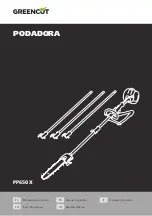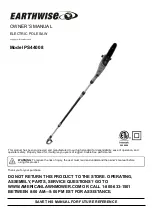
InstructIons for:
BANDSAW 400MM HORIZONTAL HYDRAULIC
ARM
moDEL no
:
SM353CE.V2
IMPORTANT:
PLEASE READ THESE INSTRUCTIONS CAREFULLY. NOTE THE SAFE OPERATIONAL REQUIREMENTS, WARNINGS & CAUTIONS. USE THE PRODUCT
CORRECTLY AND WITH CARE FOR THE PURPOSE FOR WHICH IT IS INTENDED. FAILURE TO DO SO MAY CAUSE DAMAGE AND/OR PERSONAL INJURY AND WILL
INVALIDATE THE WARRANTY. KEEP THESE INSTRUCTIONS SAFE FOR FUTURE USE.
Thank you for purchasing a Sealey product. Manufactured to a high standard, this product will, if used according to these
instructions and maintained properly, give you years of trouble free performance.
refer to
Instruction
manual
Wear Eye
Protection
Wear Ear
Protection
1. SAFETY
1.1.
ELECTRICAL SAFETY.
WARNING! It is the user’s responsibility to read, understand and comply with the following:
You must check all electrical equipment and appliances to ensure they are safe before using. You must inspect power supply leads, plugs and
all electrical connections for wear or damage. You must ensure the risk of electric shock is minimised by the installation of appropriate safety
devices. An rccB (residual current circuit Breaker) should be incorporated in the main distribution board. We also recommend that an rcD
(residual current Device) is used with all electrical products. It is particularly important to use an rcD with portable products that are plugged
into an electrical supply not protected by an rccB. If in doubt consult a qualified electrician. You may obtain a residual current Device by
contacting your sealey dealer.
You must
also read and understand the following instructions concerning electrical safety.
1.1.1. the
Electricity At Work Act 1989
requires all portable electrical appliances, if used on business premises, to be tested by
a qualified electrician, using a Portable Appliance tester (PAt), at least once a year.
1.1.2. the
Health & Safety at Work Act 1974
makes owners of electrical appliances responsible for the safe condition of those appliances,
and the safety of appliance operators.
If in any doubt about electrical safety, contact a qualified electrician.
1.1.3. Ensure the insulation on all cables and the product itself is safe before connecting to the electric power supply. see 1.1.1. & 1.1.2.
above and use a Portable Appliance tester (PAt).
1.1.4. Ensure that cables are always protected against short circuit and overload.
1.1.5. Inspect power supply leads and plugs regularly for wear or damage and connections to ensure that none
are loose.
1.1.6.
Important:
Ensure the voltage marked on the product is the same as the electrical power
supply
to be used, and check that plugs are fitted with the correct capacity fuse.
1.1.7.
DO NOT
pull or carry the powered appliance by its power supply lead.
1.1.8.
DO NOT
pull power plugs from sockets by the power cable.
1.1.9.
DO NOT
use worn or damage leads, plugs or connections. replace or have repaired immediately by a
qualified electrician. Where a u.K. 3 pin plug with AstA/Bs approval is fitted, in case of damage, cut off
and fit a new plug according to the following instructions (discard old plug safely).
(uK only - see diagram at right).
Ensure the unit is earthed correctly via a three-pin plug.
a) Connect the gREEN/YEllOW earth wire to the earth terminal ‘E’.
b) Connect the bROWN live wire to the live terminal ‘l’.
c) Connect the bluE neutral wire to the neutral terminal ‘N’.
d) After wiring, check there are no bare wires, that all wires have been connected correctly,
that the cable outer insulation extends past the cable restraint and that the cable restraint is tight.
1.1.10.
Cable extension reels
. When a cable extension reel is used it should be unwound fully before connection. A cable reel with an rcD
fitted is recommended since any product which is plugged into the cable reel will be protected. the section of the cores in the cable
is important and should be at least 1.5mm² , but to be absolutely sure that the capacity of the cable reel is suitable for this product and
for others that may be used in the other output sockets, the use of 2.5mm² section is recommended.
Recommended fuse
rating: 13A
1.2.
GENERAL SAFETY
familiarise yourself with the application and limitations of the saw, as well as the specific potential hazards.
Ensure that all Health and safety, local authority, and general workshop practice regulations are strictly adhered to.
WARNING!
take care lifting the bandsaw arm as it is heavy, and could, if not correctly lifted, affect the whole balance of the machine.
DO NOT
operate the bandsaw unless all blade guards are installed and in proper working order.
DO NOT
operate the bandsaw with the blade in the fully raised position.
DO NOT
leave the machine running unattended.
DO NOT
operate the machine if any parts are damaged or missing as this may cause failure and/or personal injury.
DO NOT
use the bandsaw for a task it is not designed to perform.
DO NOT
use damaged or deformed bandsaw blades.
DO NOT
remove the safety guard whilst in use.
DO NOT
hold the workpiece by hand.
DO NOT
touch the workpiece immediately after cutting, it may be very hot.
DO NOT
operate the machine when you are tired or under the influence of alcohol, drugs or intoxicating medication.
Ensure the machine is situated on a solid surface, adequate for supporting the weight of the machine and the workpiece.
Keep all guards and holding screws in place, tight and in good working order. check regularly for damaged parts.
Disconnect bandsaw from the electric power supply before changing accessories, making repairs or adjustments.
Wear approved safety eye protection and ear defenders.
maintain correct balance and footing, ensure the floor is not slippery and wear non-slip rubber soled footwear.
Original Language Version
sm353cE.V2 Issue: 5 (L) - 30/05/17
© Jack sealey Limited

























